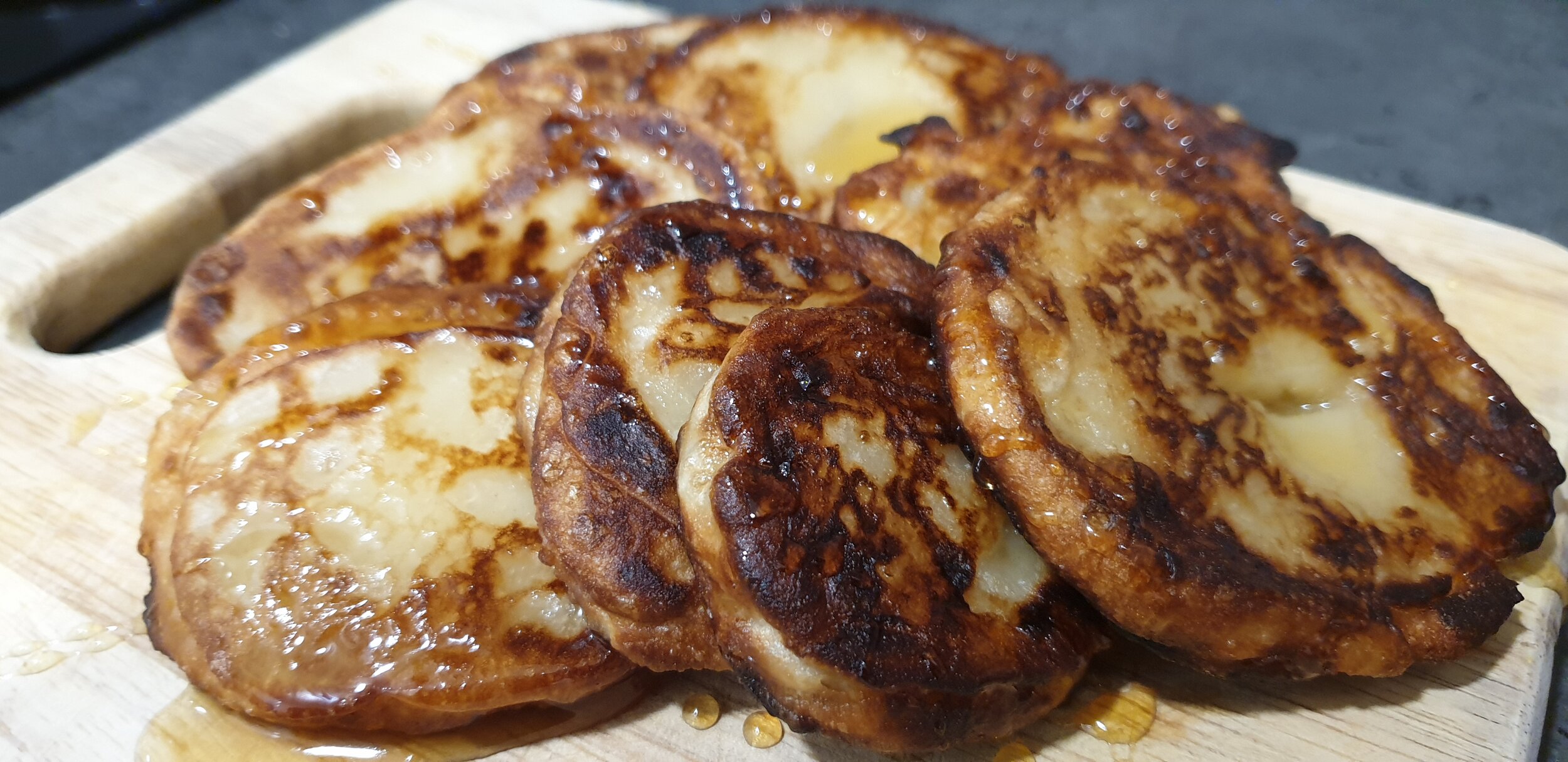Breakfast Habits In Ancient Greece
Breakfast habits In Ancient Greece
The day in the ancient Greek cities started along with the rising sun and would not finish but only late at night. With such a schedule, people would need to get some energy to manage the daily errands. Although the routines were significantly different from city to city, the options Greeks had were similarly limited. Flat barley bread with last day's leftovers, fresh or dry fruits, some watered wine (akratos oinos which gives the name to breakfast: akratisma) with bread and honey were among the options, depending, always, on the financial status of every household. An other morning food, that was more of the richer families, was the teganitai, a very old relative of what nowadays is called pancake. Today's story will focus on this specific preparation.
History of Teganitai-Pancake
The oldest testimony of teganitai comes from the 5th century b.c. and is found in the corpus of the comic poets Cratinus and Magnes. Although only fragments are saved to our days, we learn from Cratinus that they were served steaming in the morning, while Magnes tells us they are topped with or soaked in honey. A later author of the Hellenistic times, Galen of Pergamon, describes the preparation in detail, in his book ''On the properties of foodstuffs''. According to it, what we call today pancake little differs from that ancient recipe if in nothing at all. Very interesting is the fact that in many areas of modern Greece people still use that very basic recipe in combination with various vegetables to make savory pancakes, which still keep the same name of teganites (τηγανίτες)!
The Cooking Process
If someone would like to visualize the cooking process in an ancient Greek house they need to bare in mind that the kitchens were very different from what we are used now. The kitchen was hardly the room in the house for the family to hung out or to socialize with friends. The kitchen was reserved only for the females of the household whether they were servants or the lady of the family. In closed room then with normally no way for the smoke and the odors to escape was taking place the cooking. For the making of teganitai the cook would need a few only ingredients, to which, most likely, had easy access. The basic one was the flour. Ancient Greeks used barley flour for the majority of their preparations, however, in the making of bread and teganitai they used only wheat flour. As one should expect though, what we call flour for the ancient times in general, small resemblance has to the flour of modern times. That, mainly, because the milling process was still in its infant stage and many centuries would pass till the flour gets some refinement. Second in the cook's shopping list would be the olive oil which, same as now in Greece and all the Mediterranean countries, was the main fat medium for cooking. For mixing the flour to a batter water or milk, usually curdled, would be added with a pinch of salt and honey, which was the only sweetener at the time. Once the batter was ready, the teganitai would be fried in a hot pan with olive oil in batches, a few minutes to each side till fully cooked and, while still steaming hot, a generous drizzle of honey would be added on top. Unlikely the well known pancakes of our days, ancient Greeks didn't use eggs in the mix or any leavening agent, so, we should think of them being a medium thickness and considerably less fluffy than we would expect. As for the flavour, they would be slightly tangy because of the curdled milk with sweet notes of honey. After all was done, the teganitai would be served in the designated room for the family to eat and then continue everyone with their day.
Ancient Teganitai in Modern Times
Back to our times, it is common knowledge that pancakes are one of the most favourite dish around the world whether it is breakfast, lunch or any time of the day actually. With almost a different recipe for every country there is numerous styles and types to choose from and bring it to your liking. But what if someone would like to revive the old ways out of curiosity. Well, here I will try to bring the ancient recipe to the modern standards, not that there will be a huge difference. Instead of coarse flour, which propably won't be that easy to get your hands on, better to use flour for all purposes mixed with warm water. Although curdled milk has a distinct flavour, it is not highly recommended, due to safety issues; instead, Greek yogurt or even sour cream could be used diluted in the water with a spoonful of honey, preferably of thyme. To cook the pancakes-teganitai olive oil is the only way to go as its pungent aroma will make your breakfast taste magnificent. Finally, you should and, if I may say, have to finish your teganitai with a drizzle of honey and for an extra bit of luxury you could add a sprinkle of toast sesame seeds and freshly picked and chopped thyme. So, if you would like to enjoy some ancient Greek style pancakes next Sunday with your beloved ones you can find the recipe here. Till the next story, happy food time-travelling!

